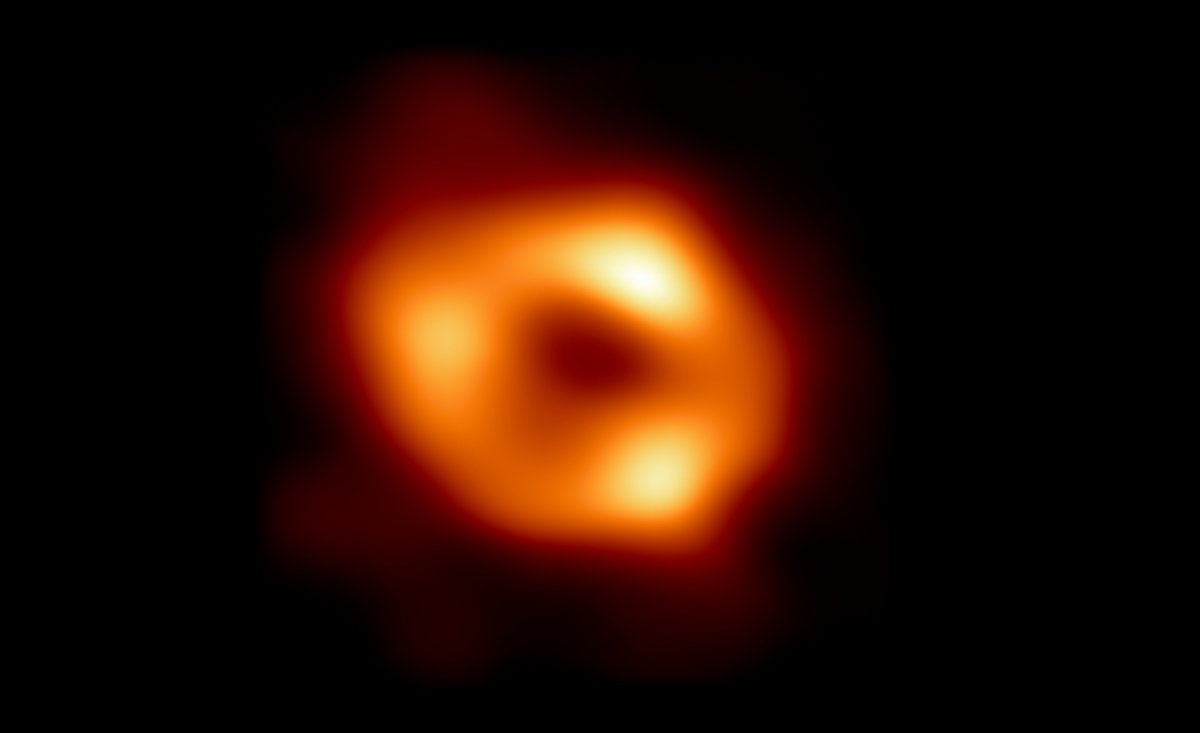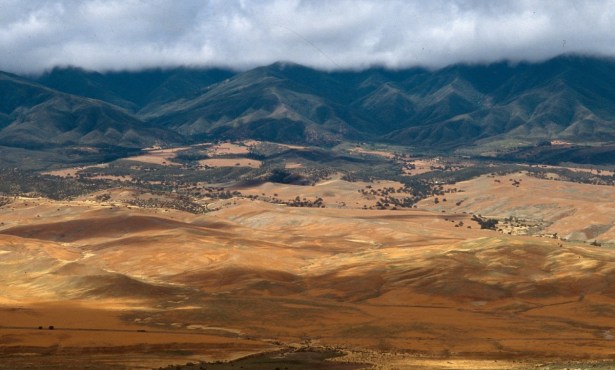Santa Barbara Astronomer Bags a Black Hole
Joseph Farah of UCSB and Las Cumbres Observatory Was Part of International Team That Made Massive Discovery

Joseph Farah moves fast. He thinks fast, he talks fast, and he even drives fast. On the weekends, the UCSB grad student and internationally recognized wunderkind of radio astronomy likes to drag race. “It distracts me,” he explained. “It keeps me sane.”
Instead of burning up the track last week, however, Farah flew to Washington, D.C., to take part in the Thursday press conference that unveiled to the world the first image of a supermassive black hole lurking at the center of our Milky Way galaxy. Afterward, Farah and his fellow scientists attended a party at the Smithsonian Castle, where they were greeted by the institute’s director and basked under a wall-sized photo of their discovery. “It was wild,” he said.

Farah was just 17 years old and a freshman at the University of Massachusetts when he joined the Event Horizon Telescope (EHT) Collaboration, an elite team of more than 300 researchers from 80 institutes around the world who were assembled to seek out black holes. Farah was the only undergraduate. The EHT linked together eight existing observatories across the globe to create a single Earth-sized telescope, and for five nights in April 2017, they collected nearly four petabytes (4,000 terabytes) of data, an amount so massive it couldn’t be compiled over the Internet and had to be transported by plane on hard disks.
The team spent the following years crunching the data and in 2019 made their first major announcement — they had seen the unseeable and captured the first direct image of a black hole. It lay in the middle of galaxy Messier 87, or M87, some 54.5 million light-years away. By contrast, the massive body presented at Thursday’s news event — known as Sagittarius A*, or Sgr A*, pronounced “Sadge-ay-star” — sits in our own celestial backyard, just 27,000 light-years away. Knowledge of its existence helps prove Einstein’s theory of relativity and offers valuable insights into the workings of such giants, which are thought to exist at the center of most galaxies.
In both cases, what we Earthlings actually saw are not the black holes themselves, since they are the very definition of darkness, but the glowing rings of radiation that surround and fall into their open maws. Even spotting those rings, however, was exceptionally difficult, especially in the case of Sgr A*, an obscured spinning object four million times larger than our Sun that the EHT scientists described as “burbling and gurgling” and changing in appearance as often as every five minutes. Trying to capture an image of it was, as one researcher put it, “a bit like trying to take a clear picture of a puppy quickly chasing its tail.”
Sign up for Indy Today to receive fresh news from Independent.com, in your inbox, every morning.
That’s where Farah was able to shine. Using lessons learned from his work on M87, he developed a way to create visuals of Sgr A* using sophisticated algorithms and forward modeling that sifted through the mountains of EHT data and separated strong observations from weak ones. The image of the lumpy orange donut now recognized the world over is an amalgam of the usable figures the team painstakingly extracted by testing “every possible parameter,” Farah explained. “We looked at different fields of view, different regularized weights — anything you can think of.”
The novel approach, officially termed “selective dynamical imaging,” earned Farah the lead author position on a paper recently published by Astrophysical Journal Letters, one of 10 papers associated with the discovery of Sgr A*. Now stationed at Goleta’s Las Cumbres Observatory under the tutelage of Andy Howell, a UCSB professor and astronomy superstar in his own right, Farah is ebullient yet humble when discussing his breakthrough. “Honestly, I devised a pretty simple method,” he said.
Howell was more forthright. “I think the fact that an undergraduate could lead one of only a handful of papers to come out of this major international collaboration of hundreds of the world’s top astronomers is astounding,” he said. “The fact that he pioneered at such a young age something no other human has — a new way to sharpen our image of black holes — is really mind-blowing.”
Farah didn’t hide his emotions, however, when he first got the news from the Journal. He received a call from his mom on his way home from Ralphs and “started screaming at the top of my lungs,” he said. “My girlfriend was with me in the car. It really freaked her out.”
Now 22 and working toward his PhD, Farah doesn’t have a lot of extra time to drag race. But he hopes to pick the hobby back up. “Soon,” he said. Farah was 5 years old when the racing bug bit him. Growing up in Medford, Massachusetts, with modest means, his parents were unable to buy him his first car as a teenager but said they would cosign a loan. “What I heard was, if I save up as much as I can, I can get the car I want,” he said.
Farah eventually purchased a 2018 Mustang with money he earned through working as well as a cash award in physics he’d recently collected. “It was the coolest thing I ever owned,” he said. “I started racing it, and I had a ton of fun.” That began what Farah called a “psychotic tradition” of putting subsequent prizes toward his next cars, including a Stingray and then a Z06. He’s now between cars but is keeping an eye out. He says he prefers quarter-mile tracks over eighth-mile because he likes to break the 100-miles-per-hour mark.
Of his work on Sgr A*, he said he’s proud but doesn’t like to dwell on past achievements. There’s plenty more to see in the universe. “I’m excited for what’s coming next,” he said. “I’m not looking back.”
Support the Santa Barbara Independent through a long-term or a single contribution.




You must be logged in to post a comment.